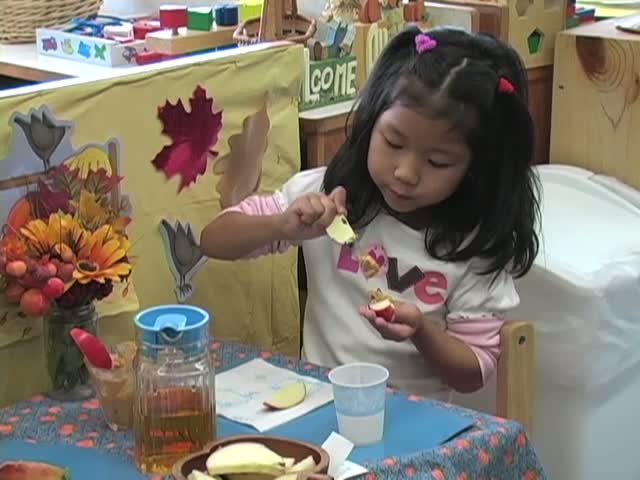Engage partners in planning and implementing intervention
|
Indicators of effectiveness: Planning & implementing intervention with partners |
“What have you found that works to…..” |
Discuss with families and early care/education partners how educational practices for all learners and/or specialized intervention will help a child achieve Extended IFSP outcomes and IEP goals. Help partners:
- Understand the concepts behind recommended intervention before implementing strategies.
- Learn/refine instructional strategies and interactions with children via modeling, demonstrating and “trying it out”.
- Reflect on how effectively modifications and adaptations prompt a child’s learning, behavior and participation.
A special educator’s collaboration: Suggestions for story time
Kevin, a special educator, thought about how he could help Monique work on one of Chike’s Extended IFSP outcomes in his child care setting (make choices during free play and stay with the activity for 10 minutes). Chike most often wandered from one center to another while mouthing the sleeve of his shirt.
Kevin initiated his consultation with Monique by summarizing her concerns, “I’ve been thinking about what you said about how hard it is for Chike to make a choice and really get interested in one activity.”
Kevin suggested that Monique help Chike increase the complexity of his play by inviting him to play with toys that he appeared most interested in (motorcycles), and then prompt him to tell a simple story about the motorcycle.
After suggesting this strategy, Kevin asked Monique, “How do you think this might work?” and listened to Monique’s response. She thought she could talk to Chike about where the driver was going, and how fast he was moving. She could also prompt Chike and another classmate to build a block garage for the motorcycles.
An occupational therapist’s collaboration: Sharing developmental information
Fran, a classroom assistant, asked Zena, an occupational therapist, how to help Elisa enjoy the art corner more with her friends. Zena observed that Elisa needed to practice “hold and do” motions i.e., holding her paper down with one hand while coloring or painting with her other one.
By sharing information from her professional education and journal reading, Zena helped Fran understand that Elisa needed to establish one hand as dominant and the other as her assist to develop skilled manipulation. If Elisa could handle the materials more easily, she was more likely to enjoy the art projects. Zena helped Fran select art projects that provided opportunities for Elisa to practice this skill.
Paljum, a preschooler, uses an effective “hold and do” pattern to pour liquids and spread peanut butter during snack.
Colorado State Dept of Education, Results Matter Video Library
A speech pathologist’s collaboration: Sharing research evidence with a partner
Tamara, a speech-language pathologist, made sure she knew all of Jonathon’s IEP goals, not only those related to improving his expressive language. She reviewed them before every monthly visit with his special educator and community preschool teacher.
Today she planned to help Jonathon’s teachers pinpoint ways they could prompt him to talk to another child while working on the motor skills suggested by the physical therapist. Together, they discussed how Jonathon would watch a friend, and then imitated her. Tamara shared research with the teacher that setting up situations for interaction with other children could prompt Jonathan to use simple words to get what he wanted. Then, they jointly reviewed how materials/activities in the art and block centers could prompt language as well as motor skills.
Opportunities to use motor activities to prompt communication:
Kyrill and Kira painting at an easel
Colorado State Dept of Education, Results Matter Video Library
Two boys building in the block corner
Center on the Social and Emotional Foundations for Early Learning



